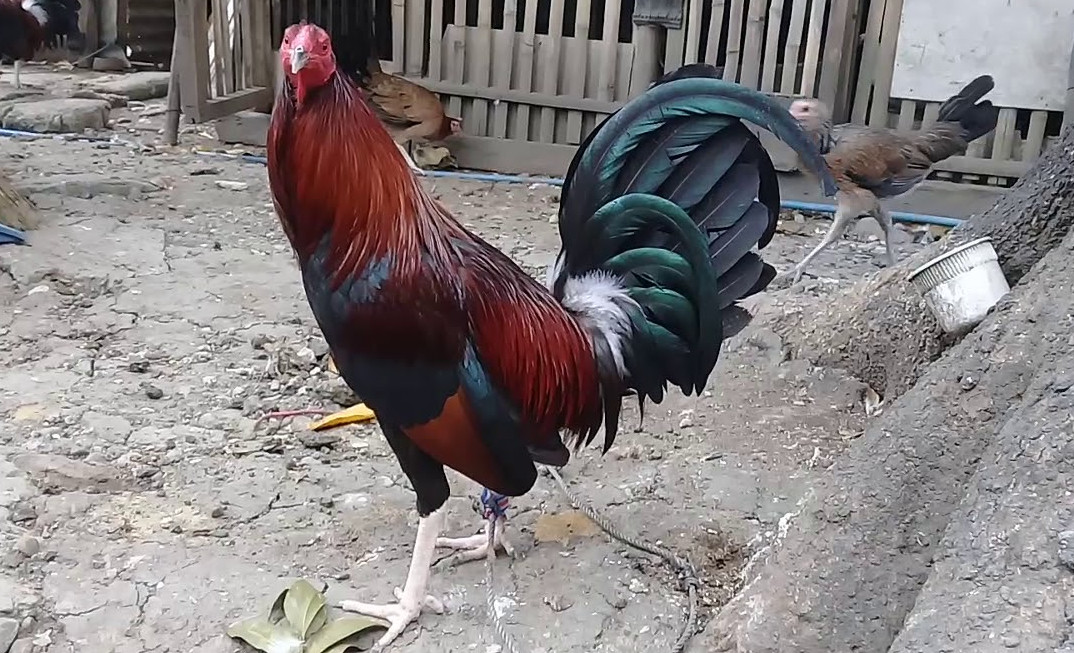Claret gamefowl is one of the oldest and most fascinating breeds of chicken. Believed to have originated in the United States, this type of gamefowl has been used by people for centuries for cockfighting and other various purposes. What makes Clarets so unique? Well, these birds are known for their beauty and grace. They also possess a unique fighting style that is unlike any other breed. This blog post will explore Clarets’ history, physical characteristics, fighting styles, how to raise them properly, and so much more. Ready to learn all about Claret gamefowl? Let’s get started!
Claret Gamefowl History
The Claret is a cross between the Red Hackle and the White Hackle, both Scottish strains of the pure red fowl. The first Claret was bred in England around 1870. The Claret is a very popular gamefowl in America and Asia. It is known for its beautiful coloration and being a good all-around fighter.

The Claret has a long and storied history as a gamefowl breed. It was first bred in England in the 1870s and quickly became popular in America and Asia for its beautiful coloration and good fighting qualities. The Claret remains a popular gamefowl breed, prized by breeders and trainers for its versatility and power in the ring.
Claret Gamefowl Fighting Style
The Claret is a chicken breed developed in the United States for cockfighting. It is named for its red plumage, which is unique among gamefowl breeds. The Claret is known for its aggressive fighting style and has been used in cockfights worldwide.
The Claret Gamefowl was developed by crossing different strains of gamecocks. One of the earliest known Claret breeders was John Madigan, hence Madigan Claret is named after him. The most common crosses are the Red Hackle and the Yellow Leg. These two strains were originally bred for their fighting ability and were used in cockfights in England and Ireland. The Red Hackle was later brought to the United States, where it was crossed with other strains of Gamecock to create the Claret bloodline.
The Madigan Claret is known for its aggressive fighting style. The bird is quick and agile, making it difficult for its opponents to land a solid blow. The Claret also has a strong beak and claws that can inflict severe damage on an opponent. Cockfighters often use gaffs or knives to help their birds win fights, but these are not always necessary with the Claret.
The Claret Gamefowl has been used in cockfights around the world. The breed is especially popular in Mexico and is often used in illegal cockfights. In Mexico, the Claret is sometimes called the “Gallo de Pelea”, which means “fighting rooster”. Cockfighting is illegal in many countries, including.
Breed Physical Characteristics
Claret gamefowls are characterized by their red plumage. They are medium-sized birds, with males typically weighing between 4 and 5 pounds and females averaging between 3 and 4 pounds. The birds have long, curved necks, and their legs are relatively short compared to their bodies. Claret gamefowls tend to be more muscular than other gamefowl breeds, contributing to their power and strength in the ring.
Frequently Asked Questions About Claret
How did the claret bloodline come about?
The claret is a cross between the red junglefowl and the blue Andalusian. The claret gamefowl was first bred in England in the 1800s.
What is the typical appearance of a claret?
Claret gamefowls are typically red with black markings. They have long tails and wattles. Claret gamefowl is usually smaller than other types of gamefowl.
What is the personality of a claret gamefowl?
Claret gamefowls are known for being very aggressive. They are also known for being good flyers.
What is the fighting style of a claret gamefowl?
Claret uses its wings to slash at its opponents. They also use their beaks and feet to jab at their opponents. Claret gamefowls are known for being very aggressive fighters.
See Also:
- Black McRae Gamefowl: All You Need to Know
- Leiper Gamefowl History and Fighting Style
- Miner Blue Gamefowl: All You Need to Know
- Sid Taylor Gamefowl History, Characteristics, Fighting Style
- Training Gamefowl: How to Make Gamefowl Stronger
